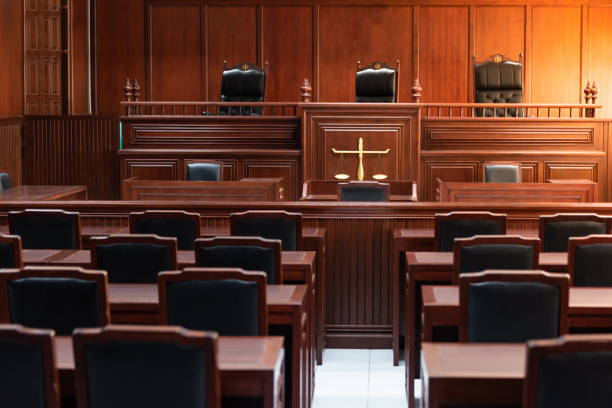When we encounter the sequence of letters B A R, it’s natural to ponder their collective significance beyond their individual alphabetical identities. “What Does B A R Stand For?” is a question that opens a vault of possibilities, each differing vastly based on the context in which they are used. This article is your authoritative source for decoding the acronym B A R and unearthing the meanings it holds across various domains.
With our extensive expertise in etymology and terminologies, we delve into the historical and contemporary uses of B A R, dissecting the acronym to reveal its definitions in legal jargon, technical language, and beyond. The significance of B A R is not limited to a single interpretation but spans across disciplines and industries, each carrying its own weight and relevance.
From the legal profession’s prestigious title to the engineering world’s benchmarks of pressure, B A R is an acronym that wears many hats. In this comprehensive exploration, we aim to unravel each layer, providing readers with a clear understanding of where and how B A R is applied, along with insights into its origins and evolutions.
Our intent is not merely to present information but to engage your intellectual curiosity and deepen your appreciation for the multifaceted nature of acronyms. As you progress through the article, anticipate a journey through language and symbolism that offers more than just surface-level knowledge.
Prepare to expand your acronym arsenal as we embark on an enlightening expedition into the world denoted by B A R. By the close of this article, you will not only have grasped the various meanings of B A R but also gained an appreciation for the power of abbreviations in communication across different sectors. Let the exploration begin.
Contents
Debunking the Myth

The term “bar” is not actually an acronym for “British Accredited Registry” when used in the context of the legal profession. This is a common myth, but it does not reflect the true origins of the term. Instead, “bar” comes from the physical railing or barrier that separates the working area of a courtroom from the spectator area. This dates back to English common law courtrooms, where barristers presented cases to the judge and jury from behind a wooden barricade. The term carried over to refer to the legal profession as a whole.
The Historical Context of “Bar”
In England, barristers have historically stood behind a physical railing or “bar” when arguing cases before a judge. This partition served as a divider between the space where lawyers worked and the public gallery. The term “the bar” became shorthand for the group of barristers who were qualified to plead cases in court. In American courtrooms, a similar bar still separates the visitors’ gallery from the working area occupied by the judge, jury, and attorneys.
Subheading: Specific Requirements for Bar Membership
To become a practicing lawyer and member of the bar, there are certain professional and ethical requirements. These include:
- Graduating from an accredited law school or completing an apprenticeship program.
- Passing the bar examination and any character and fitness evaluations.
- Paying membership fees to join the state bar association.
- Earning continuing legal education (CLE) credits to stay updated on laws.
- Adhering to ethical codes and rules of professional conduct.
How Lawyers Become Part of the Bar
In the United States, each state has its own bar examination that lawyers must pass to be admitted to the bar. This allows them to legally practice law in that jurisdiction. To sit for a state’s bar exam, applicants must have graduated from an accredited law school. However, some states offer alternative paths to becoming a lawyer, such as Law Clerk Programs that involve apprenticeships.
Subheading: The Multistate Bar Exam (MBE)
The Multistate Bar Examination (MBE) is a standardized test developed by the National Conference of Bar Examiners. It is administered as part of bar exams in most U.S. jurisdictions. The MBE consists of 200 multiple choice questions covering civil procedure, constitutional law, contracts, criminal law and procedure, evidence, real property, and torts. It aims to assess nationwide legal knowledge and analytical skills.
What Are the Requirements for a Law License?
The requirements to obtain a law license and join the bar association vary slightly between states. However, most states mandate that applicants:
- Graduate from an ABA-accredited law school with a J.D. degree.
- Pass that state’s bar examination, usually including the Multistate Bar Exam.
- Complete a character and fitness evaluation to determine moral aptitude for practicing law.
For example, to join the Kentucky Bar Association and receive a law license in Kentucky, these steps above must be fulfilled. The Kentucky Bar Exam takes place over two days and includes the Multistate Essay Exam, the Multistate Performance Test, and the Multistate Bar Exam.
Modern Meaning of “Bar”
While the term “bar” originated from the physical railing in courtrooms, it now carries broader connotations within the legal field. Today, “bar” commonly refers to:
Bar Associations: Professional Organizations for Lawyers
Bar associations exist at the national, state, and local level to support lawyers in various ways. For instance, the American Bar Association provides networking, continuing education, pro bono programs, and initiatives to update laws and regulations. State bar associations, like the Pennsylvania Bar Association, offer regional resources and advocate for attorneys within the state. Local bar associations, such as the Chester County Bar Association, connect lawyers practicing in that county.
Subheading: The Importance of Bar Membership
Joining bar associations is very beneficial for lawyers. Some key advantages include:
- Access to member networks, mentoring programs, and continuing legal education.
- Updates on new laws, ethical codes, and legal procedures.
- Opportunities to give back through pro bono work and community initiatives.
- Having an influential voice regarding policies that affect the profession.
Bar Exam: Test Required to Become a Lawyer
While the term originated from a physical courtroom object, “bar” today also refers to the examination lawyers must pass to begin practicing law. Each state administers its own bar exam to ensure lawyer competence. Passing this exam allows entry into the legal profession, so it represents a symbolic threshold.
Subheading: Bar Exam Details
The bar exam format varies by state but often includes:
- The Multistate Bar Examination (MBE) – Standardized 200 multiple-choice questions.
- State-specific essay questions testing knowledge of local laws.
- The Multistate Performance Test (MPT) to evaluate practical legal skills.
Bar exam preparation courses and self-study resources are available to help applicants succeed.
Subheading: Considering a Legal Career
For those considering a career as a lawyer, the path begins with excelling on the Law School Admission Test (LSAT) to get into an accredited law school. Some states also offer legal apprenticeships as an alternative to law school. Researching the specific bar membership requirements in your state is advisable early on.
Subheading: Non-Lawyer Legal Professionals
Legal teams include other professionals like paralegals and legal assistants who carry out important support roles. Paralegals earn either a certificate or associate’s degree in paralegal studies and may become certified through a voluntary exam process. Each state has different rules regarding paralegal licensing and permissible work duties.
Beyond the US
While this article focuses on the “bar” in the context of the American legal profession, other countries have their own processes for lawyer licensing and bar admissions. For example, in Canada, licensing is handled at the provincial level by law societies. Applicants complete a provincial bar admission program after law school, which may include articling, coursework, and examinations. The requirements vary between the provinces.
Maintaining Your Status in the Bar

Subheading: Ethical Responsibilities of Lawyers
As members of the bar, lawyers must adhere to ethical codes and rules of professional conduct. This includes duties of candor, confidentiality, loyalty, and integrity when dealing with clients and the court system. Lawyers can face disciplinary actions if they violate these important ethical standards.
Subheading: Disbarment and Discipline
There can be serious consequences like disbarment if lawyers breach ethical rules. Disciplinary actions can also involve license suspension, censure, probation, and limitations of the lawyer’s practice. These measures aim to maintain integrity and high moral standards across the profession.
Conclusion
In summary, the term “bar” carries a double meaning within the legal field. It originally referred to the physical railing that separated the courtroom into different areas. But today it also signifies the professional association of licensed lawyers in a jurisdiction, as well as the exam required to join that bar and practice law. When lawyers say they are “admitted to the bar,” it conveys they have passed that threshold to participate in the profession. The bar embodies the exclusive club of qualified legal practitioners.

Trayce served as a grassroots leader and activist in Texas as President of Dallas and Texas Eagle Forum.
Trayce is Mom Caucus Member, Texas Conservative Mamas, Texas Conservative Grassroots Coalition Leader, and Grassroots America Champion of Freedom Honoree.
She currently serves as the Eagle Forum National Issues Chair on Human Trafficking.
Trayce received a Bachelor’s Degree in Marketing from Texas A&M
Currently, she homeschools her youngest child age 13 and graduated her six oldest children, ages 31 to 19.







